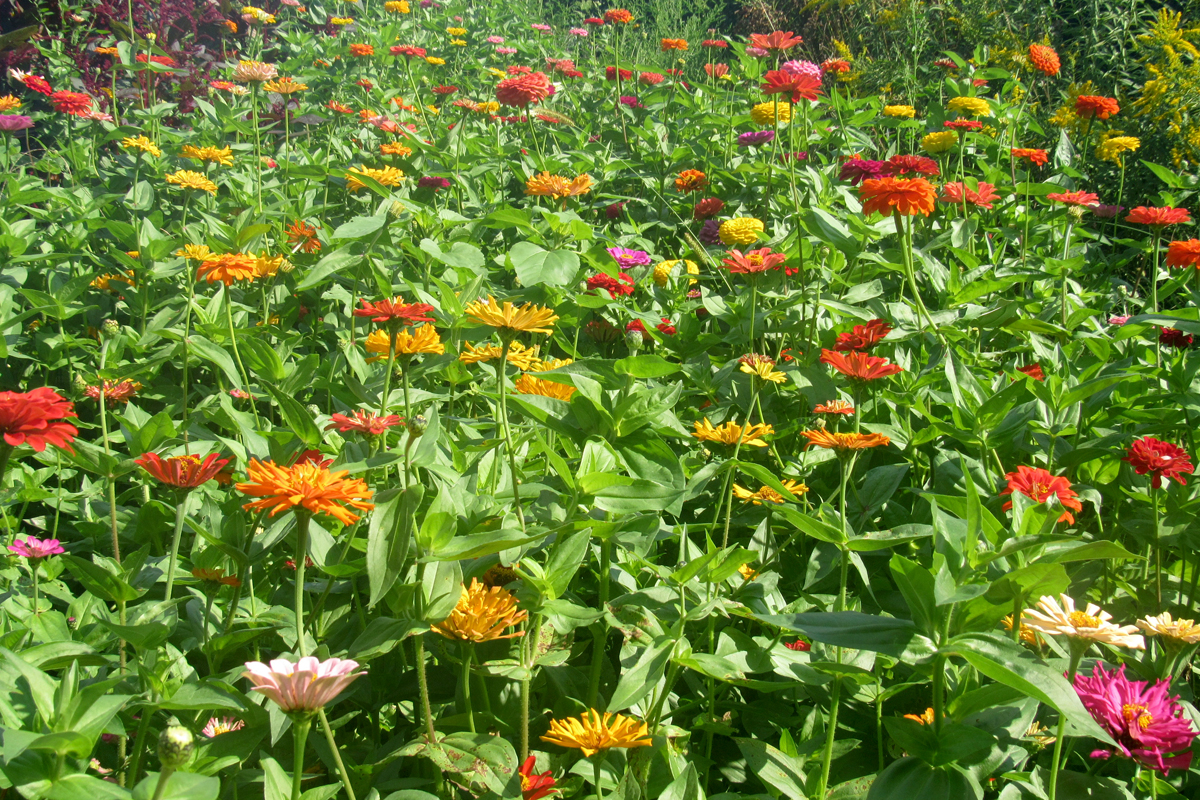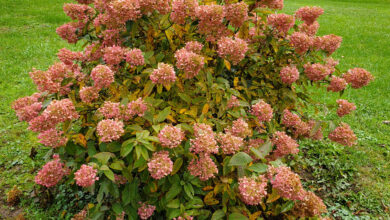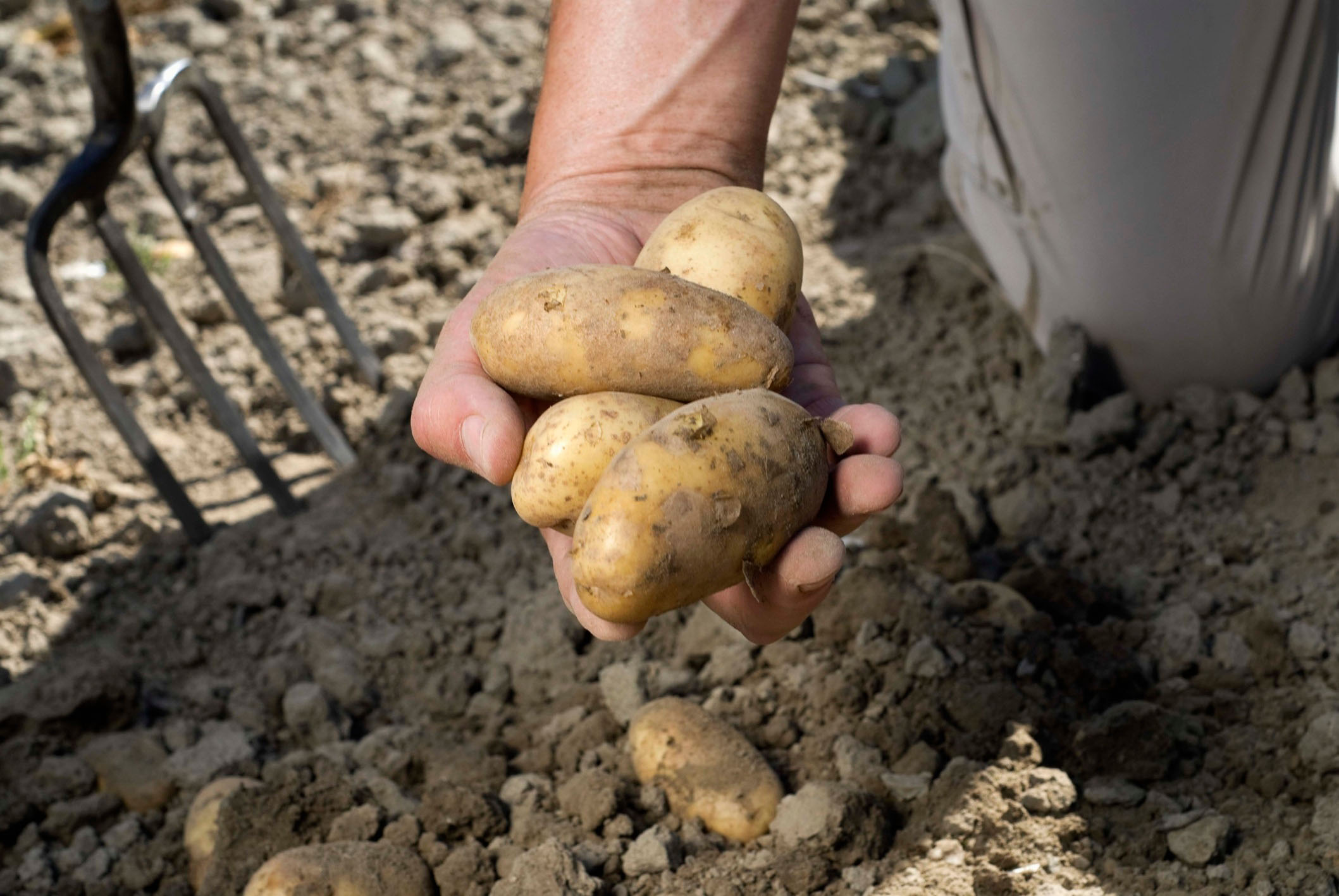Spring lawn care
Now is the time to start preparing for a lush, green lawn this summer. Maintaining a lawn that is free from weeds and pests can be a labor intensive process and depending upon your yard care priorities, you may be looking for the best time to apply pre-emergence herbicides and grub control products.
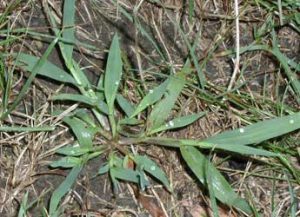
Regarding pre-emergence herbicides for crabgrass, methods include tracking growing-degree days (GDD) or waiting for your forsythia to bloom. You can track GDDs via the GDD Tracker (http://www.gddtracker.net/) website. The site begins tracking GDDs on February 15. Annual summer grasses need soil temperatures between 60 and 70 degrees F to germinate and for pre-emergence herbicides to work, they must be applied before soils reach the optimum temperature range. The GDD model tries to predict the best application time when soil temps 0-2 inches down reach 50-55 degrees.
According to Michigan State University Extension, a good environmental indicator for pre-emergence application is when forsythia bushes bloom. If you have already applied pre-emergence herbicides, they will still be effective, but you may need to follow up later in the season for crabgrass that escapes the application and needs post-emergence control.
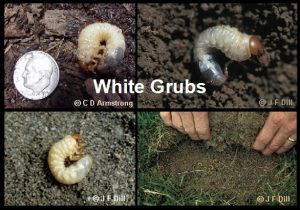
White grubs are another lawn issue which plagues homeowners. White grubs are the larval stage of several scarab beetles including Japanese beetles. They feed on the roots of grass and can lead to large patches of dead turf in your lawn.
I researched the effectiveness of biological controls and learned that Michigan State University Extension has found that Milky Spore is only effective on Japanese beetles and may not be as virulent to Japanese grubs as in the past. Michigan State says there are no biological controls which give the same level of grub control as insecticides, although parasitic nematodes (Heterorhabditis bacteriophora) may be of some help.
With that in mind, low concentrations of grubs that you find while digging in your yard will not do extensive damage and can be left alone. If you have large patches of dead turf and high concentrations of white grubs, here is some advice from Michigan State Extension:
Do not use products containing only lambdacyhalothrin, gamma-cyhalothrin, bifenthrin, deltamethrin, cyfluthrin, or permethrin for any phase of grub control (preventative or curative). Do not use preventive compounds such as clothianidin, thiamethoxam, or imidacloprid now. Apply in June or July to control grubs which will do damage in the fall.
The preventive compound chlorantraniliprole ideally should be applied in April or May to control grubs that would damage turf in the fall as it will take longer for this material to move to where grubs will feed in July.
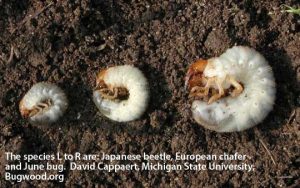
To kill grubs now or in the fall, use carbaryl or trichlorfon.
Always wear rubber gloves and boots when applying insecticides to turfgrass. Irrigate your lawn with at least 0.5 inches of water after application. This is essential for the chemical to work properly. Allow the grass to dry before letting pets or people into the treated area. Mow your lawn immediately before applying insecticides for grubs to remove weed flowers and protect pollinators.
Remember that it’s OK to have a tolerable level of weeds or insects in your home lawn. Dandelions and Dutch white clover are high quality forage plants for pollinators.
A thick, healthy lawn with a large, dense root system is your best defense against grubs and weeds. Michigan State says make a regular practice of mowing your yard with the mower at the highest setting, and fertilize properly. You can broadcast fine compost on top of your lawn to improve your soil as well.



